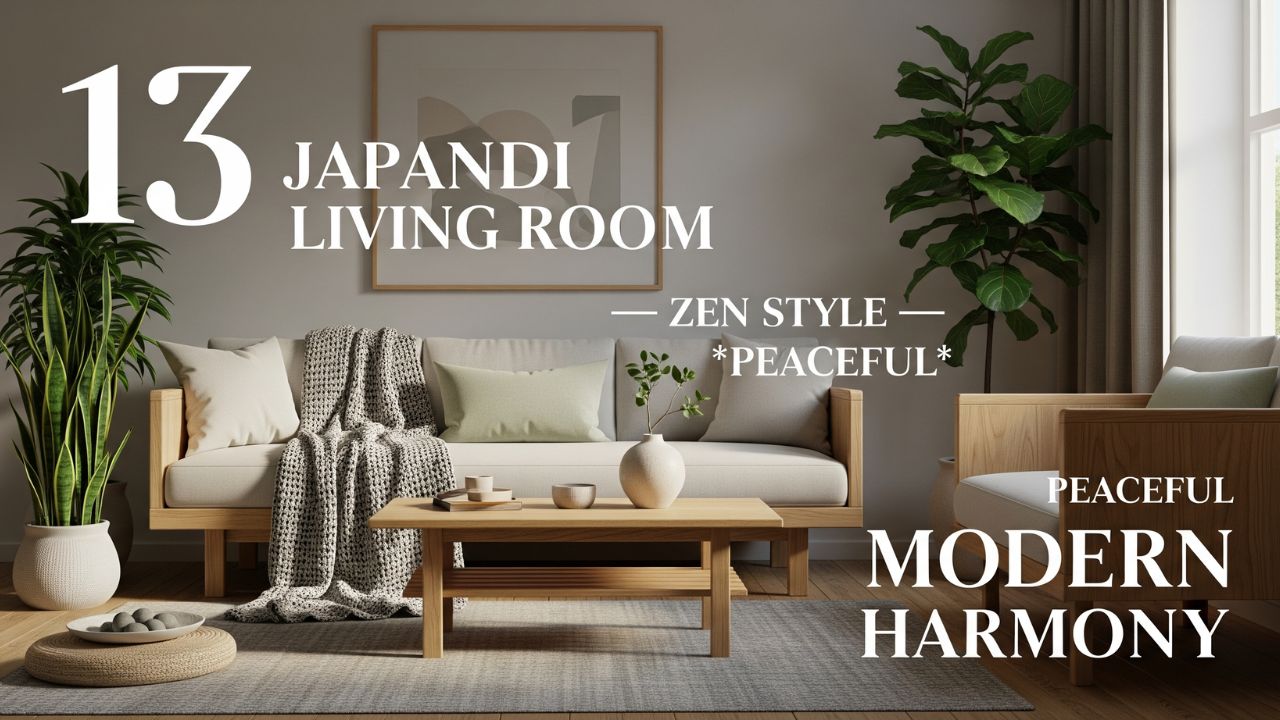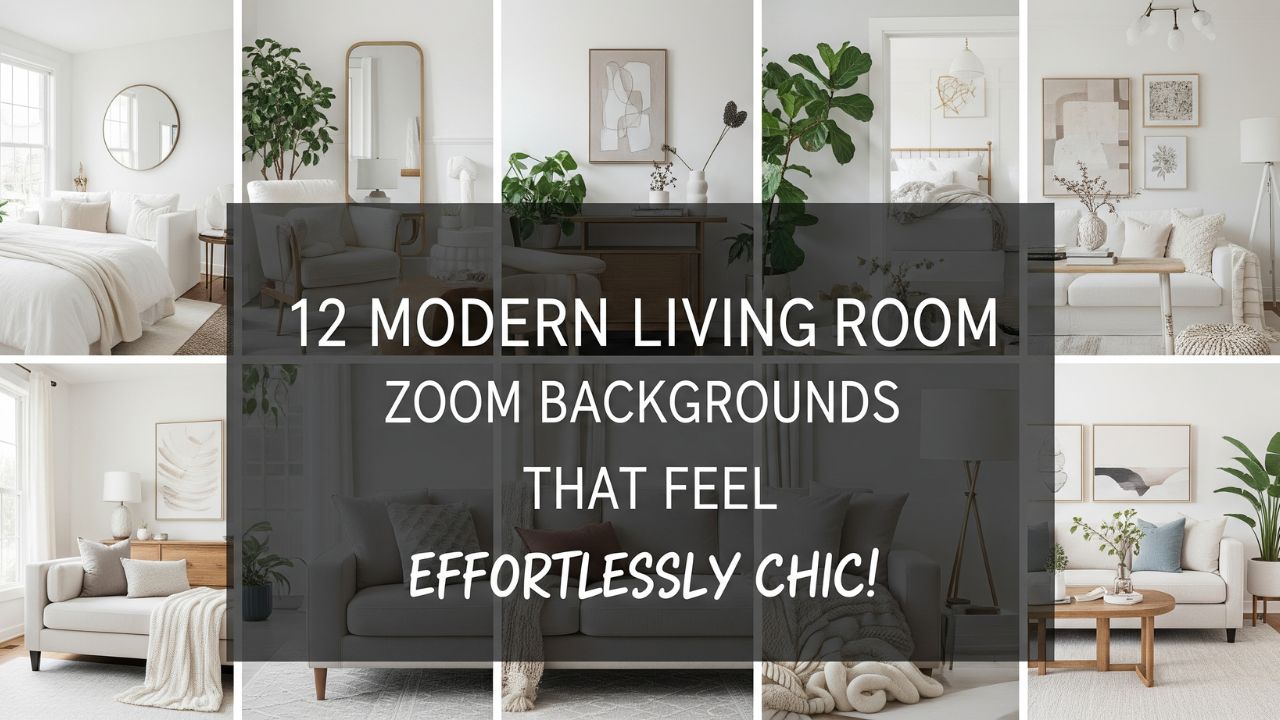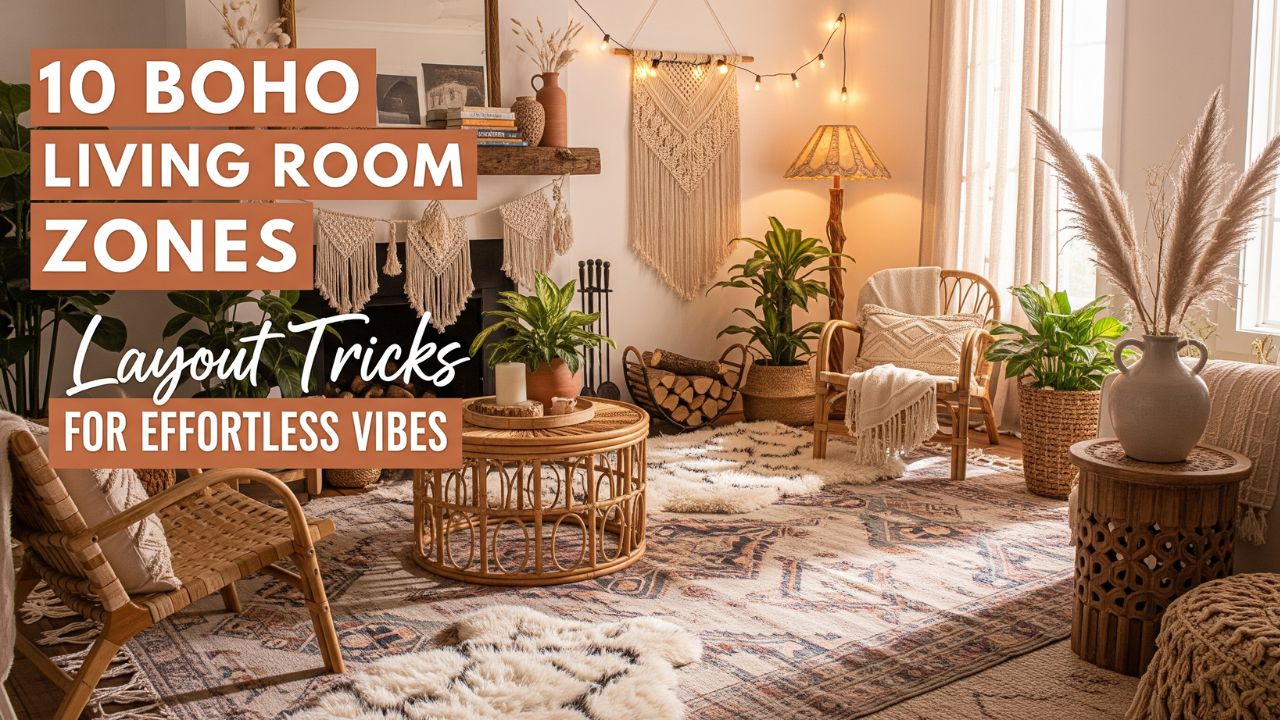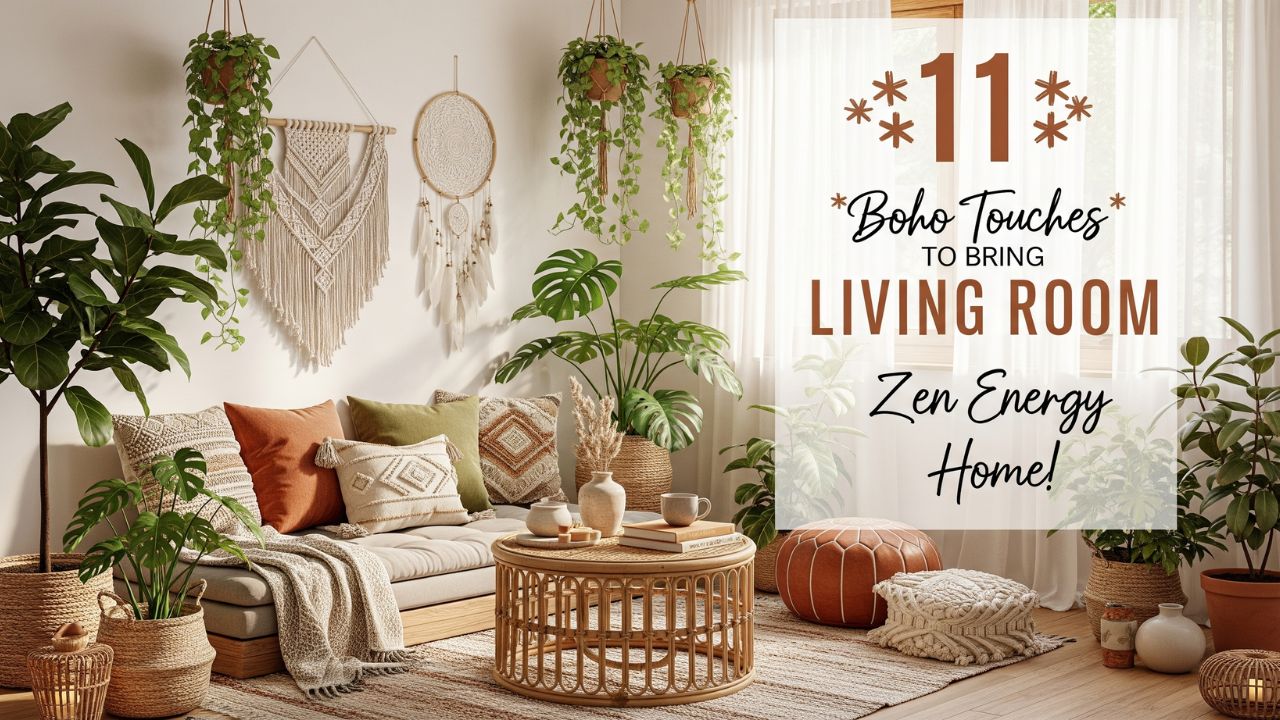Have you ever stepped into a room that instantly calms your senses? The soft hum of nature, the balanced contrast between minimalism and beauty, and a soothing sense of serenity—welcome to the world of Japanese interiors.
In a world dominated by excess and constant noise, the Japanese style of home decor offers a refreshing, tranquil escape. Known for its simplicity, elegance, and profound connection to nature, the Japanese-inspired living room has become a sought-after design choice for homeowners and interior designers alike.
But what is it about Japanese interiors that make them so captivating? Is it the understated beauty of a Zen-inspired space? Or perhaps the seamless integration of functionality with aesthetic appeal? Whatever it may be, Japanese interiors offer a unique approach to design, rooted deeply in the culture’s philosophy and love for the natural world.
In this post, we’ll explore 13 awe-inspiring Japanese living room ideas that will leave you eager to transform your own space. Whether you’re already a fan of minimalism or simply looking for fresh, inspiring ideas to enhance your home, you’re in for a treat.
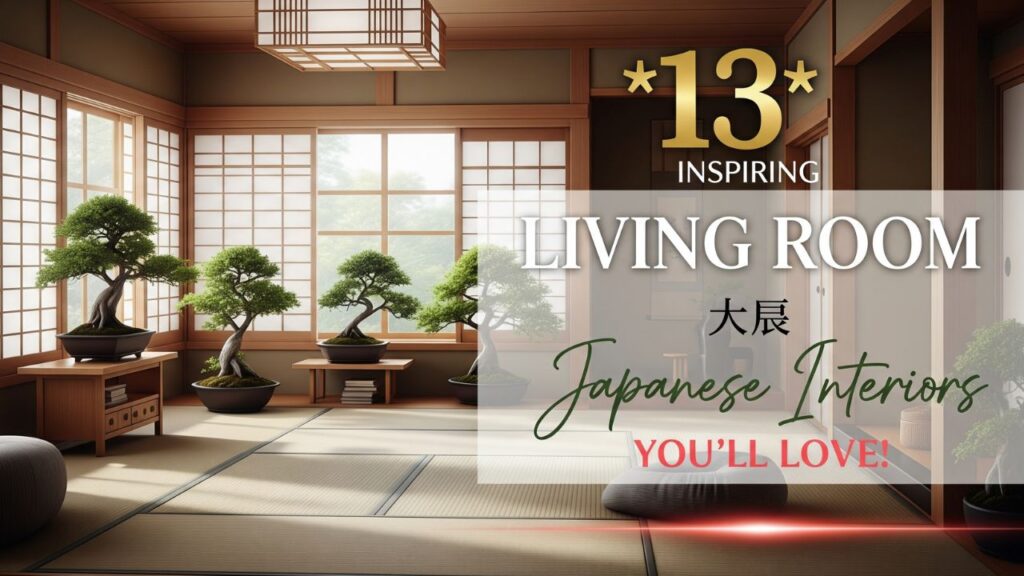
Table of Contents
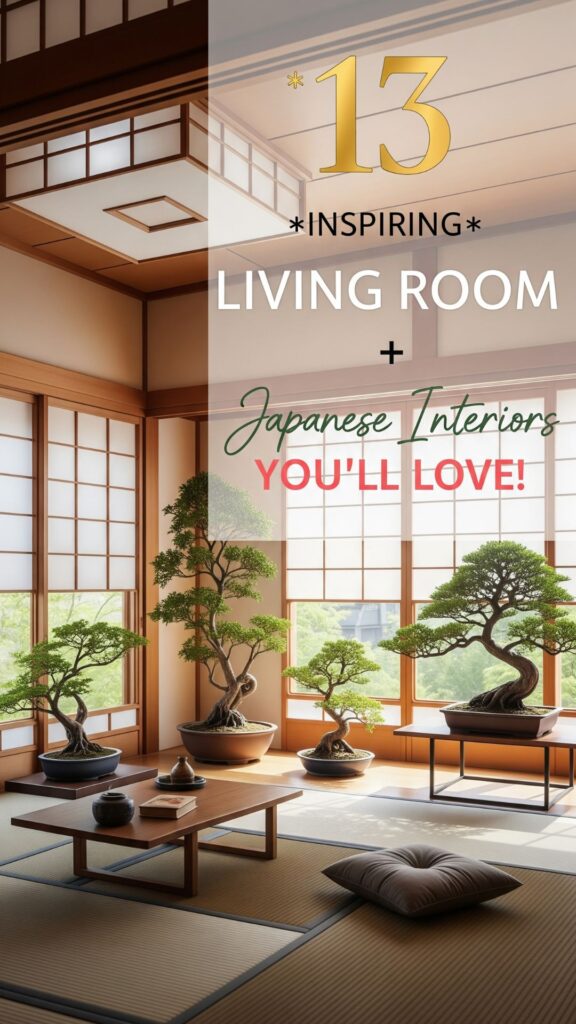
13 Inspiring Living Room Japanese Interiors
1. Embrace the Minimalistic Approach
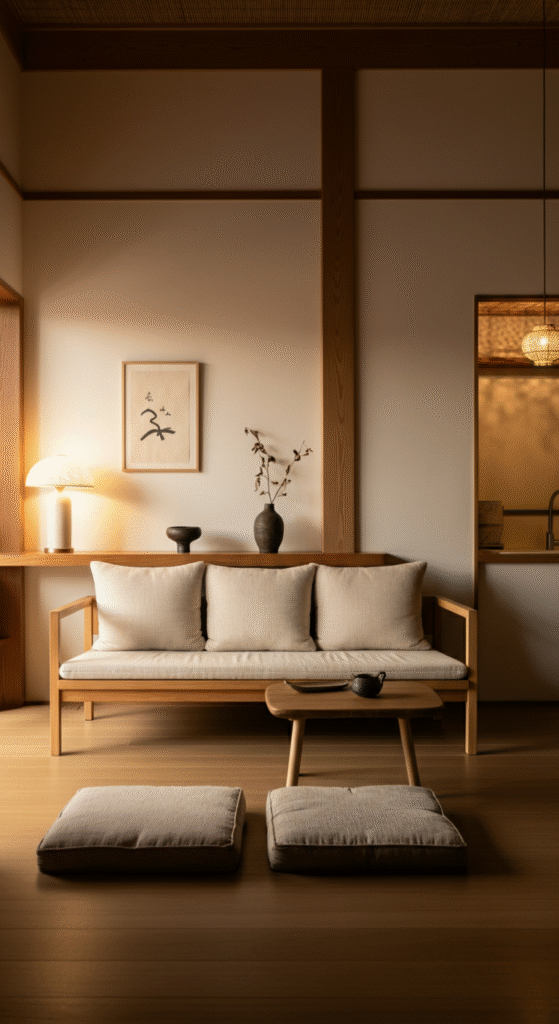
Japanese interiors are often synonymous with minimalism. This design principle isn’t just about decluttering; it’s about making space for the things that truly matter—your peace, your comfort, and your connection to the environment around you.
In a Japanese-inspired living room, less is more. The furniture is typically low-profile, simple in design, and functional, helping to promote a sense of calm and order.
Did you know? Japanese minimalism isn’t just an aesthetic—it’s a reflection of the country’s philosophy of wabi-sabi, which values simplicity and the beauty of imperfection. By embracing minimalism, you allow your living room to breathe, creating an atmosphere that fosters relaxation and mindfulness.
2. Natural Materials Take Center Stage
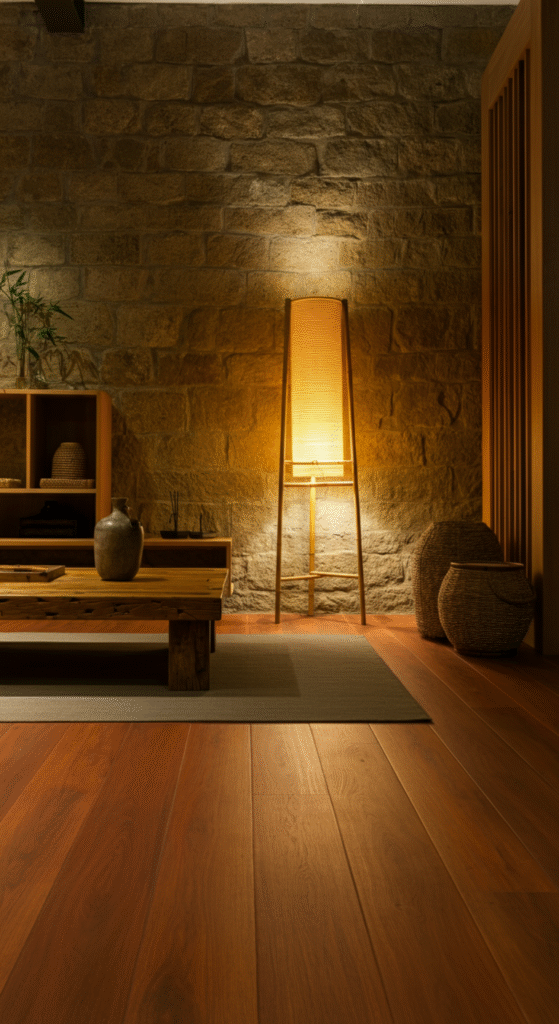
In traditional Japanese homes, the use of natural materials is not just a choice; it’s a way of life. Wood, bamboo, paper, and stone are often the materials of choice in Japanese interiors, as they represent a harmonious connection to nature.
Imagine a living room with rich wooden floors, a tatami mat corner, and bamboo furniture—each piece reflecting the natural beauty of the world outside. Not only do these materials add texture and warmth to the space, but they also help to create an organic flow between the indoors and the outdoors.
Myth or Fact? Some people believe that Japanese interiors are cold and uninviting due to the stark minimalism and lack of ornate decor. In reality, the use of warm, natural materials like wood and cotton gives the space a cozy, welcoming feel.
3. Tatami Mats for Authentic Japanese Vibes
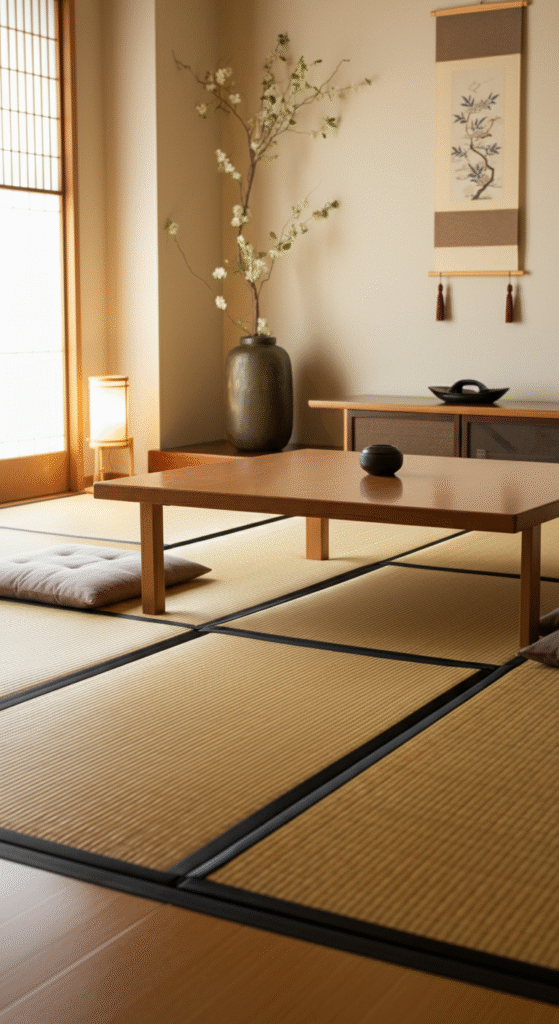
One of the most distinctive features of Japanese interiors is the tatami mat, a traditional straw mat that serves as both a flooring material and a seating area. These mats, often placed on the floor of a living room, invite a sense of warmth and authenticity into the space.
A tatami mat corner can be used for relaxing, reading, or even meditating. The soft, natural texture of tatami is ideal for creating a serene environment that encourages mindfulness.
Did you know? The tatami mat is not just a piece of decor—it’s deeply rooted in Japanese culture. The size of the mat is standardized, and the way it’s arranged in a room is often an indication of social hierarchy and room function.
4. Neutral Color Palettes for Tranquility
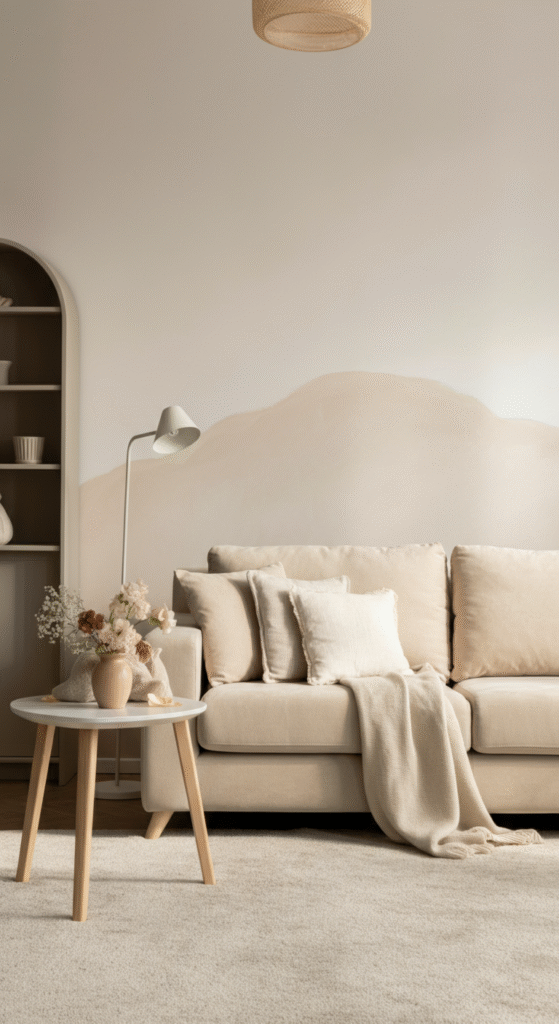
When it comes to color in Japanese-inspired interiors, less is definitely more. A neutral color palette dominated by shades of white, beige, brown, and gray creates a calm, peaceful environment that encourages relaxation. These hues work to soothe the eyes and create a cohesive flow throughout the room.
By choosing earthy tones and avoiding loud or contrasting colors, the Japanese-inspired living room achieves harmony—a core value in traditional Japanese aesthetics.
Fun Fact: In Japanese design, white is considered a color of purity and simplicity, symbolizing clarity and peace.
5. Shoji Screens to Add Elegance and Privacy
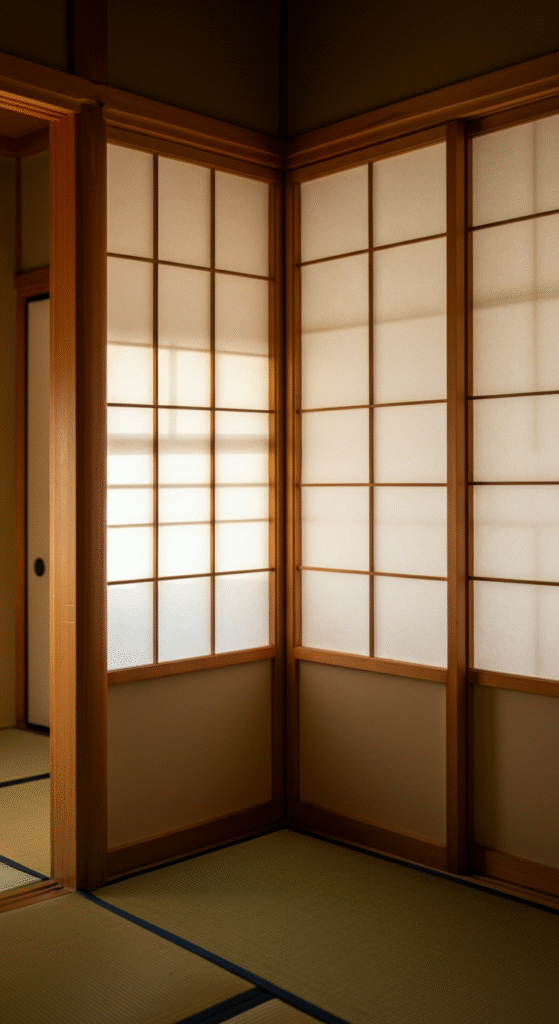
Shoji screens, made from wood and rice paper, are an iconic feature of traditional Japanese design. They not only provide a sense of privacy but also allow light to filter through, creating a soft, ambient glow. In a living room, these screens can be used to divide the space or as decorative accents.
These translucent screens beautifully capture the delicate balance between light and shadow, adding an element of elegance and intrigue to any room.
Interesting Fact: The art of making Shoji screens is a skill that has been passed down through generations in Japan. These screens are highly valued for their craftsmanship and the way they capture natural light.
6. Futons for Simple and Flexible Seating
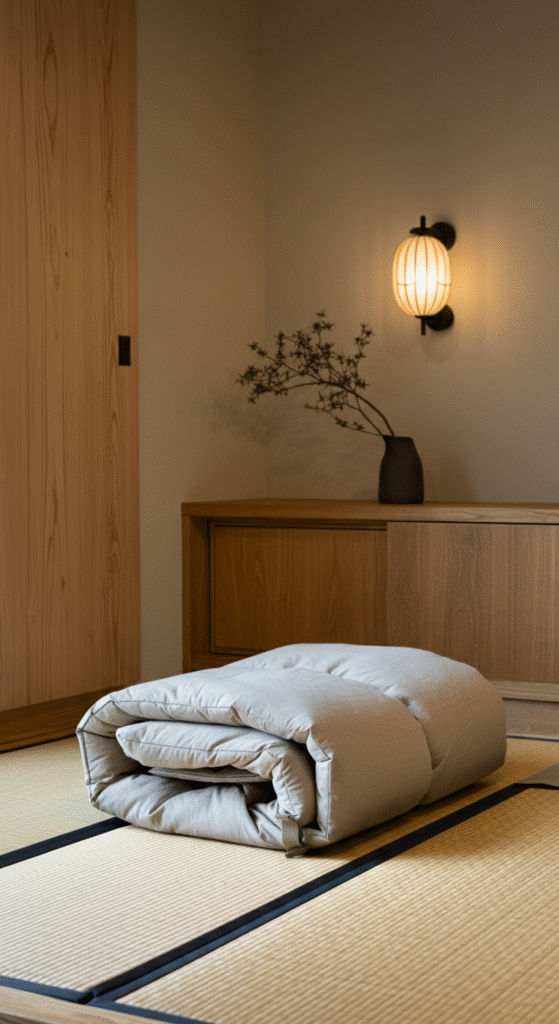
In many Japanese homes, the living room serves as a multifunctional space, and furniture must be both practical and adaptable. One of the most versatile pieces is the futon. Traditionally used for sleeping, the futon can also serve as a seating option in a Japanese-inspired living room.
By using low-profile futons, you’re able to maximize the space, which is especially useful in smaller homes. These foldable mattresses can be easily stored away during the day, allowing you to reclaim the space for other activities.
Did you know? Futons are a staple in Japanese homes and are often used in combination with tatami mats. They’re rolled up and stored in a closet during the day, making the room feel more spacious and flexible.
7. Japanese Sliding Doors for Space Efficiency
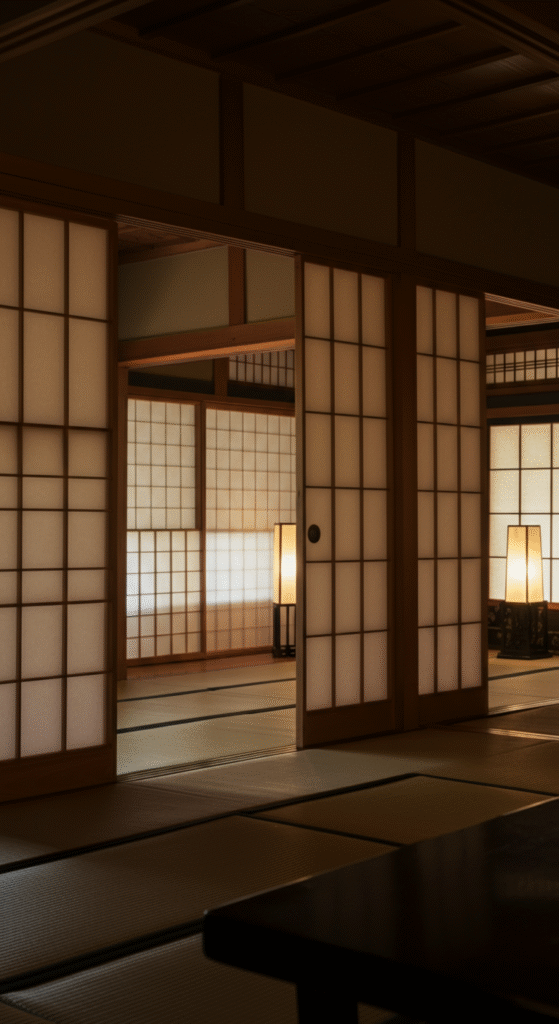
Sliding doors, or fusuma, are a common feature in Japanese homes. These doors, made of wood and paper, slide open and closed rather than swinging out. This makes them an excellent option for small spaces, where every inch of room matters.
In a Japanese-inspired living room, sliding doors can be used to separate different areas of the room or create a visual barrier without sacrificing space.
Myth or Fact? Some believe that sliding doors in Japanese interiors are purely for aesthetic purposes. However, they are also highly functional, offering an efficient way to divide spaces and maintain privacy.
8. Greenery Brings Life to the Space
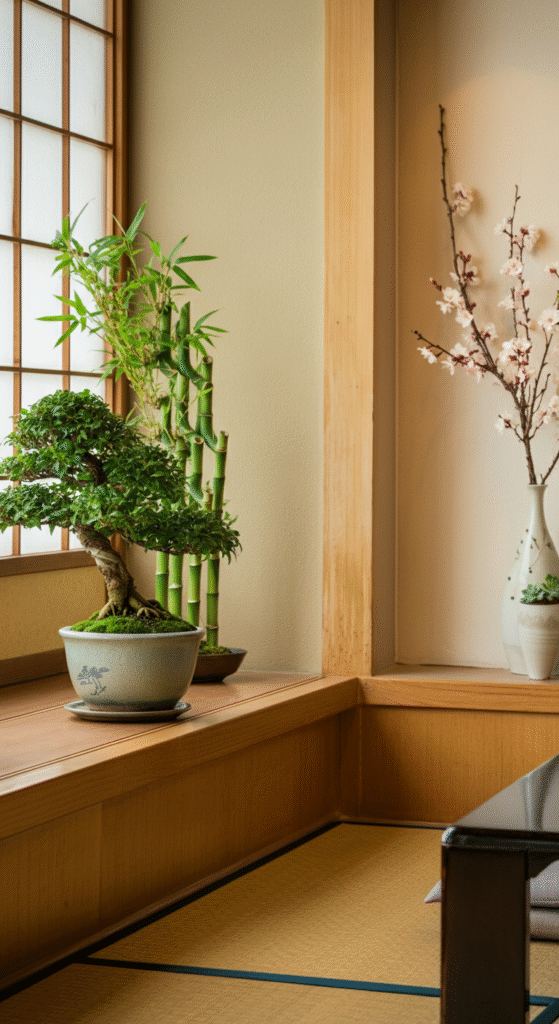
Incorporating plants into your living room is another way to bring the outdoors in. In Japanese interiors, plants are often seen as a way to create balance and bring life to a space. Simple plants, such as bonsai trees, orchids, or bamboo, can add a pop of green without overwhelming the room’s calm atmosphere.
Fun Fact: Bonsai, the ancient art of growing miniature trees, is a meditative practice in Japan that requires patience and care. Adding a bonsai tree to your living room can bring a sense of serenity and mindfulness.
9. Open Shelving for a Clean and Organized Look
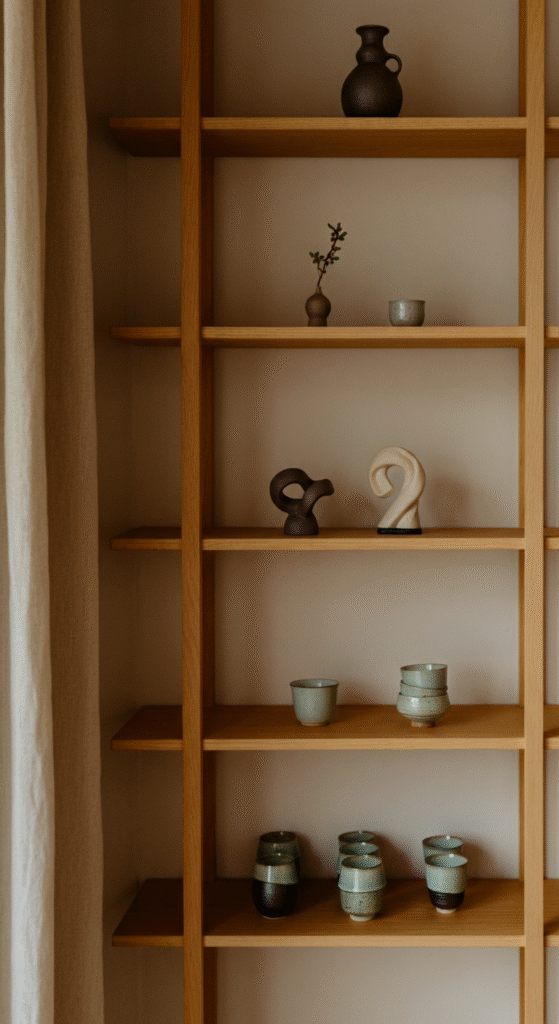
In Japanese-inspired living rooms, open shelving is often used to display objects in a minimalist fashion. Whether it’s a collection of ceramic tea cups or a simple vase, the objects placed on these shelves are carefully chosen to complement the space’s overall design.
This open-shelving system allows for a clean, organized look, while also offering a chance to showcase beautiful, meaningful objects.
Did you know? The art of displaying objects in Japanese interiors follows the principle of kanso, which encourages simplicity and removing anything unnecessary.
10. Zen-Inspired Elements for Calm and Balance
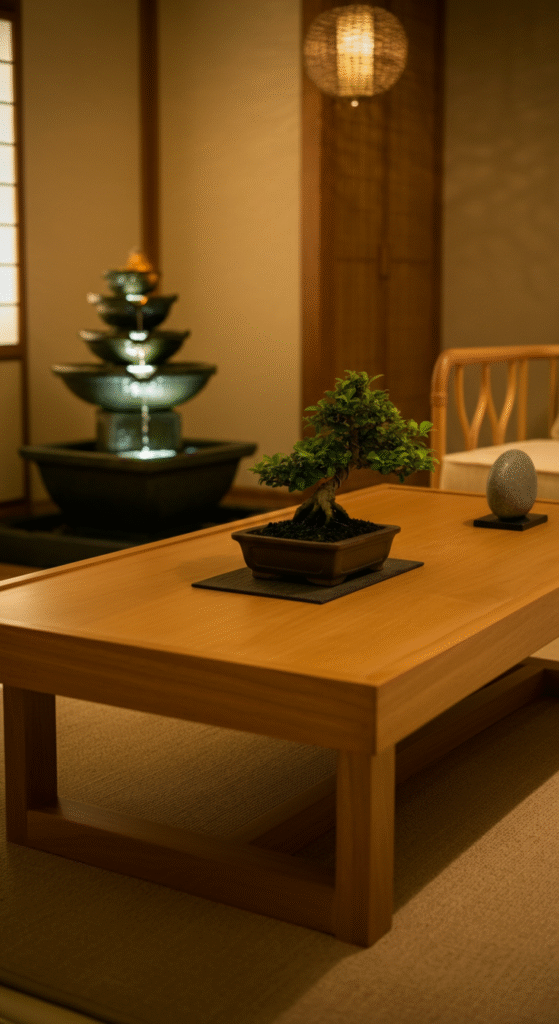
Incorporating elements of Zen into your living room is a great way to promote inner peace and tranquility. Zen-inspired pieces include low wooden tables, stone sculptures, or minimalist art. These items help create a sense of balance in the space, allowing you to unwind and reflect.
Myth or Fact? Many people assume that Zen-inspired interiors are too stark or devoid of personality. In reality, Zen decor is meant to create an atmosphere where your mind can rest and reflect, free from distractions.
11. Custom Woodwork Adds Personal Touch
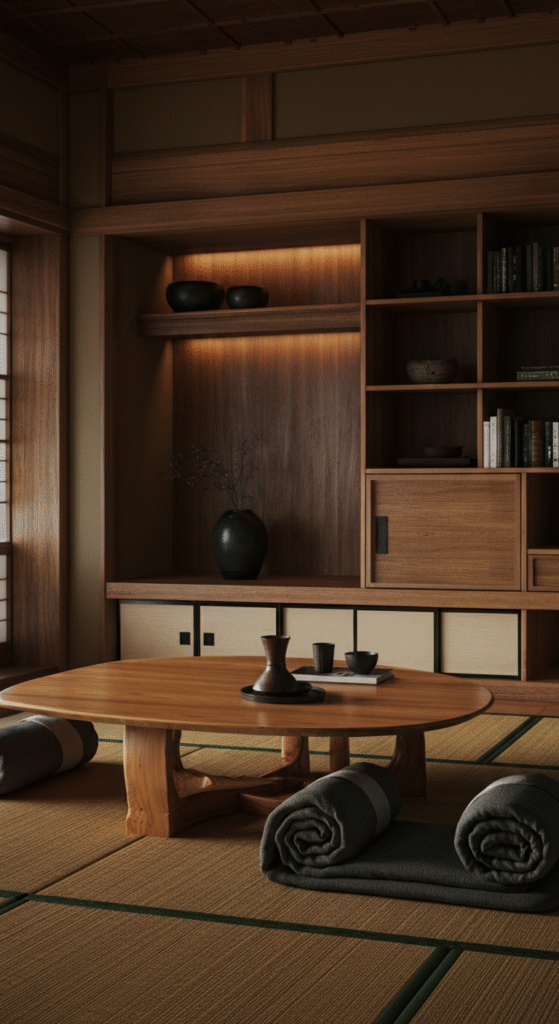
Japanese design often involves custom woodwork that is functional as well as decorative. From shelving units to custom-made tables, the inclusion of woodwork gives your living room a personalized, unique feel.
The beautiful craftsmanship of Japanese woodwork can elevate the design of any living room, adding an organic touch that complements the natural materials used in the space.
Interesting Fact: The Japanese word kintsugi, meaning “golden joinery,” refers to the art of repairing broken pottery with gold. It symbolizes the beauty in imperfection and is a perfect representation of Japanese design’s focus on authenticity.
12. The Power of Negative Space
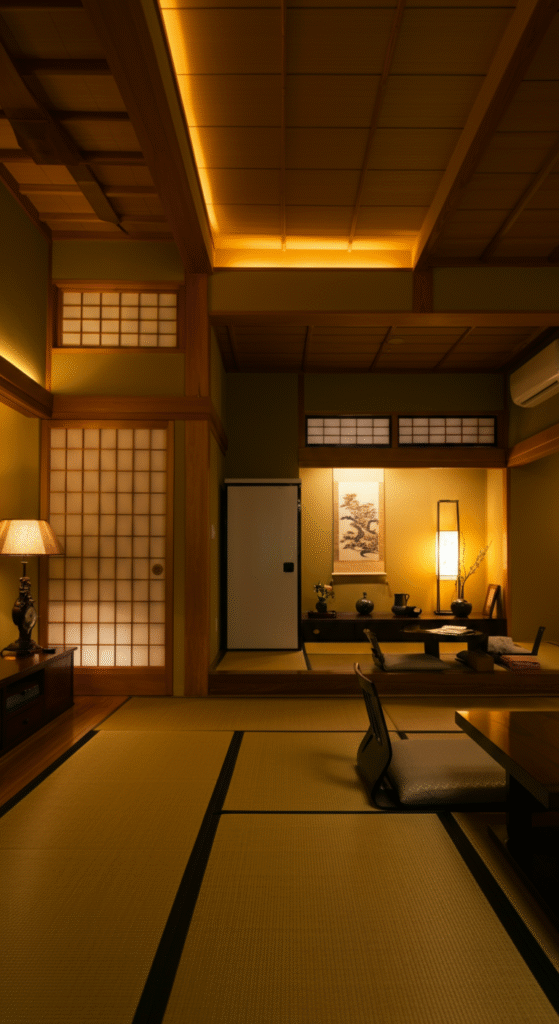
In Japanese interiors, the concept of “negative space” is just as important as the objects themselves. The space between items—whether it’s the distance between furniture pieces or the empty space on a shelf—allows the room to breathe. It’s the spaces that aren’t filled that often contribute the most to a room’s tranquility.
This focus on negative space encourages mindfulness and contemplation, allowing your living room to become a sanctuary where you can unwind and clear your mind.
Did you know? In Japanese design, negative space is sometimes referred to as ma, and it’s considered a vital part of creating harmony in the space.
13. Lighting Sets the Mood
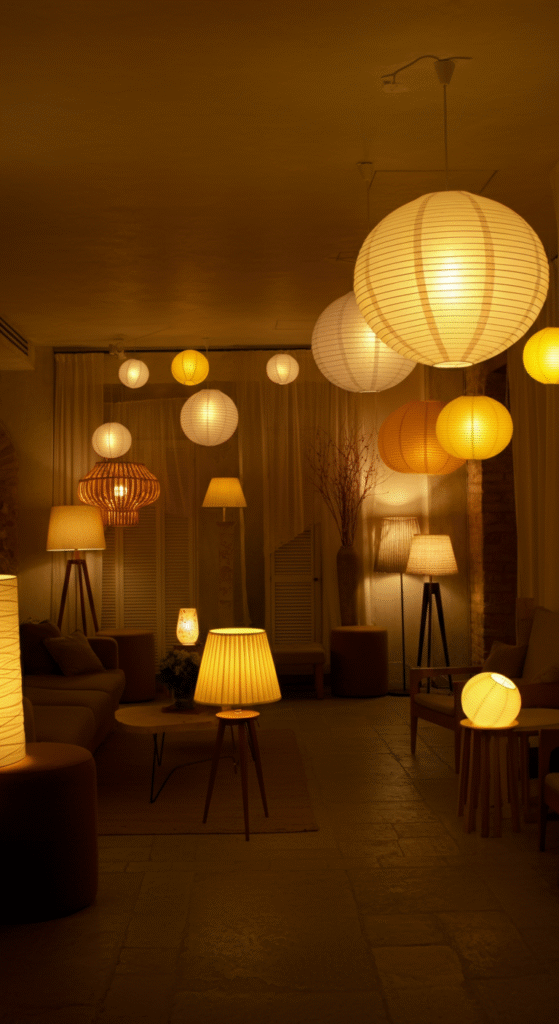
Lighting plays a critical role in any living room, and in Japanese interiors, it’s used to create a soft, warm ambiance. Paper lanterns, floor lamps, or recessed lighting can all contribute to the room’s calming atmosphere. The key is to avoid harsh, bright lighting, opting instead for subtle, gentle illumination.
Myth or Fact? Many believe that Japanese interiors are always dimly lit, but in reality, the use of layered lighting allows for flexibility in how the room is illuminated.
Conclusion
Japanese-inspired living rooms are all about creating a serene, balanced space that invites relaxation and mindfulness. By incorporating elements such as natural materials, minimalistic furniture, tatami mats, and soft lighting, you can transform your living room into a calming sanctuary.
Whether you’re looking to embrace the simplicity of minimalism or add subtle Zen-inspired touches, these 13 inspiring ideas are sure to help you create a space that reflects the timeless beauty and tranquility of Japanese design.
Frequently Asked Questions (FAQs)
What are the key features of a Japanese-inspired living room?
A Japanese-inspired living room is characterized by simplicity, minimalism, and a strong connection to nature. Key features include natural materials like wood and bamboo, neutral color palettes, low-profile furniture, and tatami mats or futons for seating. The design focuses on creating a calm, peaceful environment that fosters relaxation and mindfulness.
How can I incorporate Japanese style into a small living room?
Even in a small living room, you can embrace Japanese style by using low-profile furniture, such as futons or low-slung sofas, to maximize space. Opt for neutral colors, natural materials, and sliding doors to divide areas and keep the space feeling open. Incorporating plants, like bonsai trees, and choosing multi-functional furniture will help enhance the Zen-like vibe without overcrowding the room.
Is Japanese interior design only for large homes?
Not at all! Japanese interior design is incredibly versatile and can be adapted to both small and large spaces. The minimalist approach, use of neutral colors, and multifunctional furniture make it an excellent choice for smaller rooms. Japanese interiors emphasize creating a sense of tranquility, which can be achieved in any space, regardless of size.
Can I mix Japanese interior design with other styles?
Yes! Japanese design works well with other styles, especially when you focus on its minimalist and nature-inspired elements. For example, it blends beautifully with modern, Scandinavian, or even industrial designs. You can mix Japanese simplicity with a pop of color, unique textures, or contemporary art, as long as the overall theme remains balanced and harmonious.
What materials are commonly used in Japanese-inspired interiors?
Japanese interiors primarily use natural materials such as wood, bamboo, rice paper, tatami mats, and stone. These materials help create a connection to the natural world and promote a sense of calm. The use of these elements also adds warmth, texture, and authenticity to the space.
